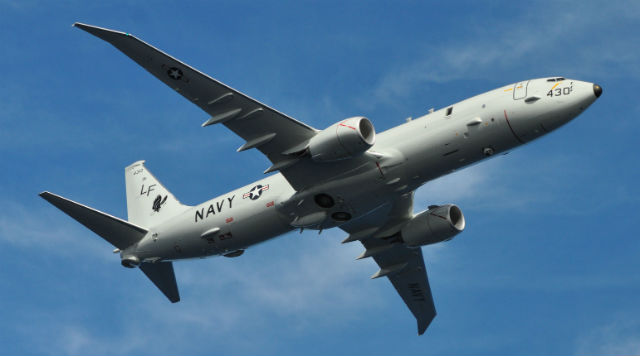The Boeing P-8 Poseidon has successfully completed operational testing and is set to deploy for the first time later this year with the US Navy, programme and company officials say. The aircraft is also set to enter full-rate production in 2013.
“We’re rapidly coming to the conclusion of almost all of our SDD [system development and demonstration] tasks,” says Rick Heerdt, Boeing vice-president for the P-8A programme, during a briefing at the Navy League’s Sea-Air-Space Exposition. “We’re focused and driving towards a full-rate production decision and initial operational capability later this year.”
 |
|---|
US Navy |
The first operational squadron will deploy in December 2013, says Capt Aaron Rondeau, the navy’s P-8A Poseidon integrated product team lead.
The only remaining developmental task left to complete is full fatigue life testing on the Boeing 737-dervived airframe, Heerdt says.
Production is ramping up in 2013 to 10 aircraft, from seven in 2012, with three of this year’s examples being for India, Heerdt says. India’s first P-8 will arrive in the country in the second quarter of 2013, with two more to arrive during the third quarter under an eight-aircraft order with the nation’s navy.
Australia is also expected to order a minimum of eight P-8s, Rondeau says. Canberra is expected to have the aircraft delivered and in service around 2016 or 2017, he adds. Australia is already participating in the development of the P-8’s Increment 2 and Increment 3 upgrades.
Increment 2 is broken up into two parts, the first of which will become operational in 2014, Rondeau says. This includes an early iteration of the Multi-static Active Coherent (MAC) sonar system, which consists of dozens of active sonar buoys that send out sonar pings from various directions while passive sonar buoys listen for the returns. Information is networked together to help the P-8 find and kill submarines.
A second, more advanced package will become operational in 2016. It will include an improved MAC, high altitude anti-submarine warfare (ASW) sensors and a high altitude ASW weapons capability, which Rondeau says is a Mk 54 torpedo with a wing-kit.
Increment 3, which is set to become operational in 2020, will add greater network centric warfare capabilities to the P-8, Rondeau says. It will also greatly improve the aircraft’s computer architecture and add new networked anti-ship weapons.
Source: Flight International



















